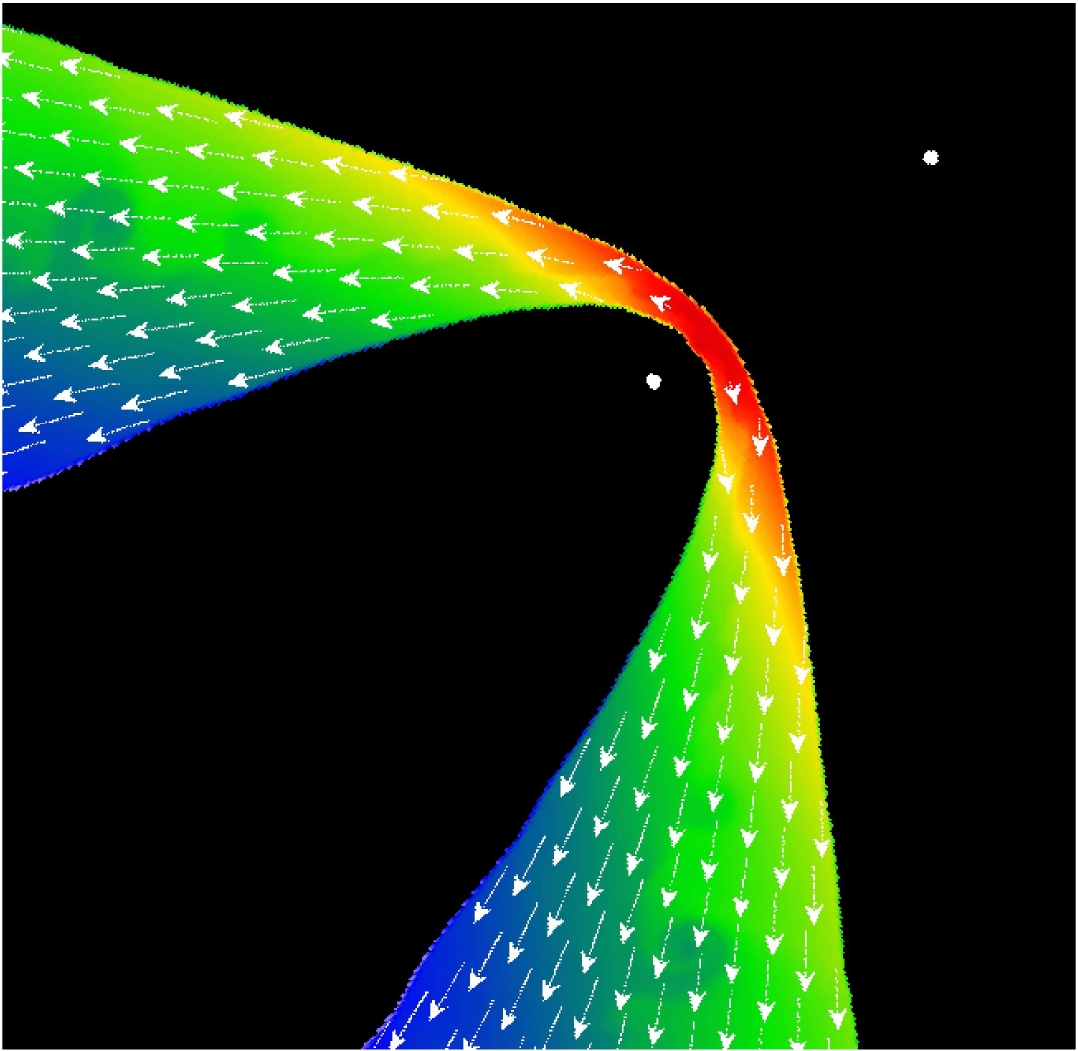
Pollock, A. M. T., Michael F. Corcoran, Ian R. Stevens, and P. M. Williams, Bulk Velocities, Chemical Composition, and Ionization Structure of the X-Ray Shocks in WR 140 near Periastron as Revealed by the Chandra Gratings, ApJ, 629, 482-498 (2005) (ADS)

(click on the image for a larger version)
Date: 2007 December 03
Update: 2019 November 27
This is not a solar flare cartoon - it depicts the shock wave formed at periastron passage in the Wolf-Rayet binary WR140. Perhaps nature's best shock wave for this purpose, it explores the same parameter space every periastron (7.92 years in this case), driven inexorably by the precise rules of celestial mechanics. Thus it is probably a pretty good laboratory for studying shock physics, presumably with clues about how our (much lower Mach number) solar and heliospheric shocks develop. One of the more fascinating aspects of this process is its association with strong infrared emission. Do solar shocks make dust too? Or leave contrails perhaps?
Based on Chandra objective-grating spectroscopy. What a shame that Chandra cannot comfortably observe the Sun!